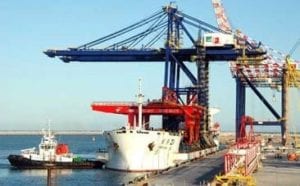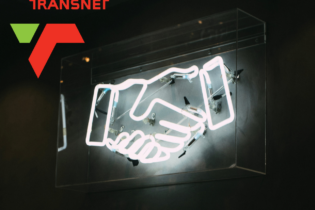Port operators must identify and evaluate smarter solutions to improve their efficiencies and reduce waiting times. As African imports and exports increase, so too does the demand for capacity and efficiency.
“A new kind of IT is needed,” says T-Systems’ senior sales manager: TLL Division, Bridget Kelly. “The culture of innovation today is going to require something different. It’s going to require that companies collaborate. It’s going to require that companies share data. It’s going to require more of what we see in social networking. It’s going to require innovation that breaks down the barriers between large companies. Hogging data does nothing for anybody. Sharing data creates the jumps and bridges the gaps needed for growth and progress,” she says. Kelly believes a collaborative model is needed. “Individuals need to cooperate in an environment which benefits all the players. These models require participation. A true network model is needed in a network economy. Simply put, the more players that participate, the better. It is all about inclusivity, not exclusivity.” Ports are big business and are of national strategic importance. But they have to compete with other ports in South Africa, as well as those in SADC. Increasing the level of port efficiency is, therefore, important. “In Africa, we need to lift our performance stats, lift our productivity and the way we compete because, currently, we are not able to compete with global players. We have to raise the efficiency of our port operations.” It is a known fact that port operators spend a large amount of time waiting – be it outside the port, inside the port, within the port, or when leaving the port. This leads to significant congestion, which negatively impacts the port city, its residents, and the people trying to do business in those cities. Lack of visibility means it’s almost impossible for operators to increase their efficiency, due to their dependability on external variables. “Being unable to access data means one cannot improve one’s service,” continues Kelly. “It is not only internal processes that determine how good you are – you have to work with external processes in order to improve.”This can be done using a single platform, into which parties feed their data through various applications. In this way, shipping agents, for example, are able to turn around their customer requests faster and more effectively, and increase the productivity of their businesses.
In the airline industry there is a ‘ten mile out’ concept, which assists with the management of aircraft entry into the airport. The same concept can apply to trucks, with truck stops used to signal and manage arrival. At the moment, trucks arrive at ports and then wait for days until they can be accommodated, often because relevant data has not been available to everybody. One of the biggest benefits of port IT visibility is felt within trucking operations, achieved by providing freight operators with better and more regular information. This leads to better allocation and use of expensive assets. Versatile platforms are able to collect machine-to-machine statistics and provide high-level analytics. For example, temperatures within temperature-sensitive cargo can be monitored through applications, which then communicate with the central platform. Geo-fencing is used to provide specific information to any users in a specific location. It is a demarcated wireless area that is receptive to IP devices which can supply information to an operator in control of that area. Broadcast notifications could be given to warn of delays, with operators able to take appropriate action. “At a macro level, the data could be aggregated and then used to establish the efficacy or efficiency of one port compared to another, allowing comparative analysis to be done. Manufacturers can decide which port to use, based on port efficiency. This is often the case when determining the location of vehicle manufacturing plants,” Kelly says. Terminal operators are heavily dependent on data received from a range of sources. “A single platform can disseminate data from multiple sources, creating an integrated platform for all stakeholders, from the port authority to the trucking companies. Better IT can make them more effective and allows a port authority to measure them against service level agreements,” she concludes.







